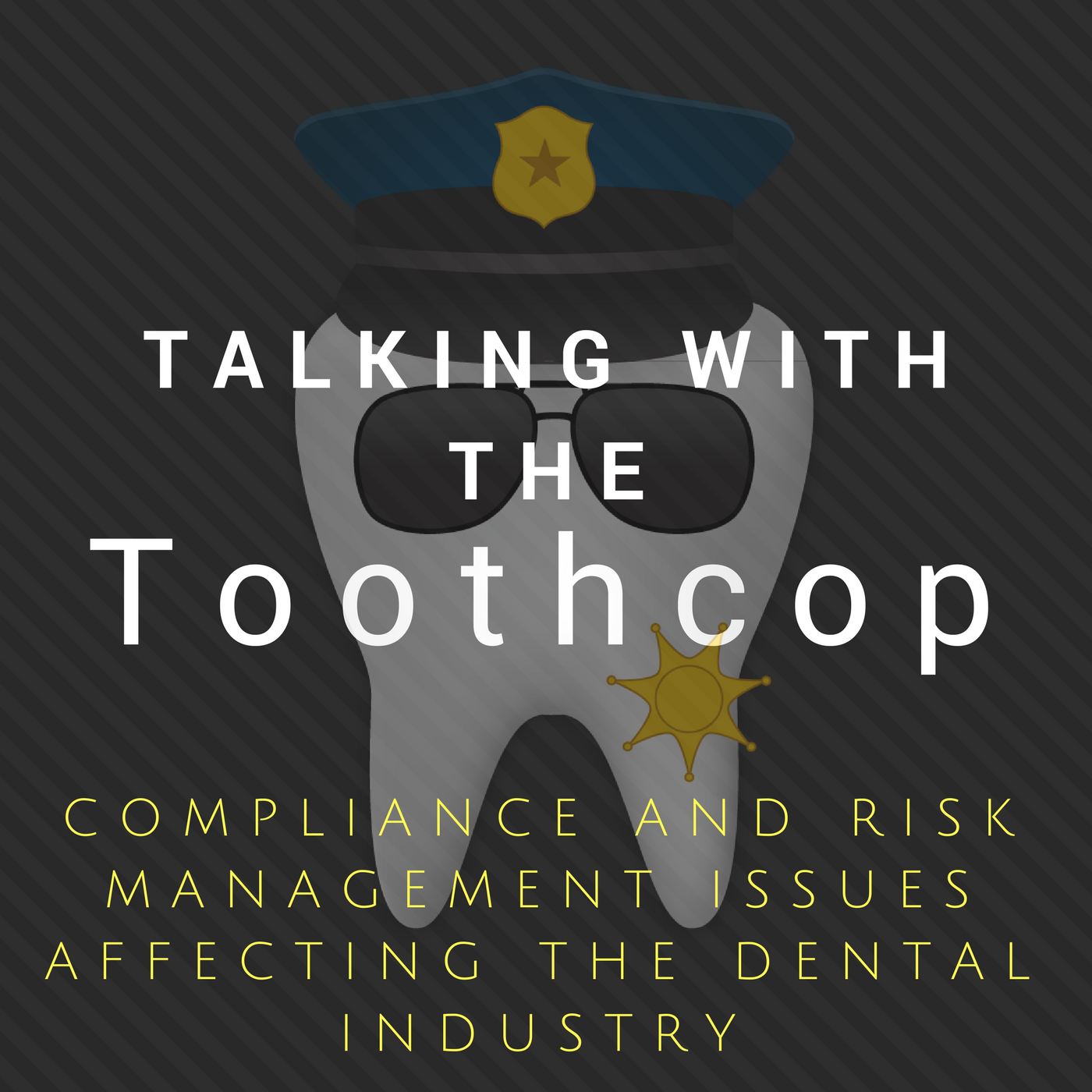Every five years, Texas conducts inspections of any practice that uses sedation. Some practices have recently undergone their initial inspections. From what I’ve heard, most have gone pretty well. Some are getting busted for things they consider nit-picky—like missing information on their preoperative checklist—but that the state board takes seriously. So in this episode of Talking with the Toothcop, Andrea and I chat about preoperative checklist requirements, the Electronic Prescribing of Controlled Substances (EPCS), as well as continuing education requirements. These are things you NEED to stay on top of—so don’t miss it!
Outline of This Episode
- [4:10] Texas: Updates regarding sedation
- [10:34] Physical examination subsection C
- [13:09] Anesthesia-specific examination subsection B
- [13:48] Special pre-op considerations: pediatric or high-risk
- [15:25] Rules on equipment and use
- [16:24] EPCS: Electronic Prescribing of Controlled Substances
- [29:48] Continuing Education: Human Trafficking Training
- [33:17] How to keep everything straight
The required preoperative checklist for nitrous oxide + sedation + anesthesia
You can find the preoperative checklist in its entirety HERE. I’m referencing specific line items in this checklist that must NOT be neglected. Firstly, do NOT remove anything from the pre-op checklist. If you don’t heed this warning, the state board will make you fix it.
At a minimum the preoperative checklist must include documentation of the following when applicable (summarized):
- Medical history (allergies, surgical history, review of family surgical history, medications)
- Confirmation that pre and post-operative instructions were delivered to the patient
- Medical consults were conducted if needed
- Physical examination and documentation (weight, blood pressure, pulse, respiration rate)
- Anesthesia specific physical exam (airway assessment, ventilation and respiratory rate)
- Pre-procedure equipment readiness check
- Confirmation of pre-procedure treatment review
- Special preoperative considerations as indicated for sedation/anesthesia administered to pediatric or high-risk patients.
So where are things getting missed?
The physical examination section clearly states that you must obtain: preoperative vitals, including height, weight, blood pressure, pulse rate, and respiration rate. This applies to every level of sedation, from nitrous oxide to general anesthesia. The issue that’s coming up most frequently during inspections is that dentists and their staff aren’t documenting the respiratory rate.
Now, a lot of pediatric dentists are not taught that they’re required to document the respiratory rate. You may not be accustomed to it—but you need to start doing it. Not only that, but vital signs need to be recorded every ten minutes or less. It’s the rules. So is recording the height and weight of an adult patient every appointment. It may not feel necessary, but you can’t just say “It’s not that big of a deal because it’s only nitrous.” You have to comply with the rules to stay out of trouble.
You must also make sure you’re recording the Mallampati score and/or Brodsky score. The state board is looking for how you verified the respiratory or ventilation rate. They want that to be clear (and it can be documented by observation, auscultation, or capnography). Keep listening to hear more about pediatric and high-risk patients as well as equipment and use instructions that are being missed.
Want the latest version of my checklist? Shoot me an email at toothcop@dentalcompliance.com and I’ll happily share it with you.
EPCS: Electronic Prescribing of Controlled Substances
Electronic prescribing of controlled substances is already a requirement in many states. As of January 1st, 2021 Texas will join the list. It will require dentists, physicians, and healthcare providers to e-prescribe schedule 2 drugs. If you need help finding a prescribing platform that works best for you, I’ve linked many options below.
But wait—don’t confuse this with your PMP responsibilities. According to the state board rule 111.2: “Each dentist who is permitted by the Drug Enforcement Agency to prescribe controlled substances shall annually conduct a minimum of one self-query regarding the issuance of controlled substance through the Prescription Monitoring Program of the Texas State Board of Pharmacy.” You can log in to PMP Aware to check your prescribing history to make sure there haven’t been mistakes. If you find something blatant, figure out if you need to address it.
Another change? Until September 1st, you were required to do a 2-hour CE once every 3 years (use and prescribing in the course of dentistry). Now it’s an annual requirement to do the CE and a self-query check. Every time you issue a prescription it needs to be justifiable and you have to perform a patient history search—every time. What are the exclusions from this? Who can do the PMP check? What is the maximum you can prescribe? Listen to find out!
Continuing Education: Human Trafficking Training
Human trafficking is becoming a pandemic in its own right. Texas isn’t the first state to require it, but every healthcare provider—who is not a physician—is now required to complete a course on human trafficking. There are a lot of courses available online, but as of right now the state requires a Health and Human Services Commission approved course. It’s required training before your next license renewal.
Are you wondering how you’re supposed to keep everything straight? How do you track all the training, continued education, and compliance measures you’re supposed to take? I’ve linked a detailed list below that should help you stay on track!
Resources & People Mentioned
- Required Preoperative Checklist
- iPrescribe
- Allscripts
- iCoreConnect
- Veradigm
- MD Toolbox
- Surescripts
- https://texas.pmpaware.net/login
- Texas State board rule 111.2
- Blx Training CE
- Dental Anesthesia CE
- Human Trafficking Training
- Continued Education Requirements
Connect With Duane
- https://www.dentalcompliance.com/
- toothcop(at)dentalcompliance.com
- On Facebook
- On Twitter
- On LinkedIn
- On Youtube


